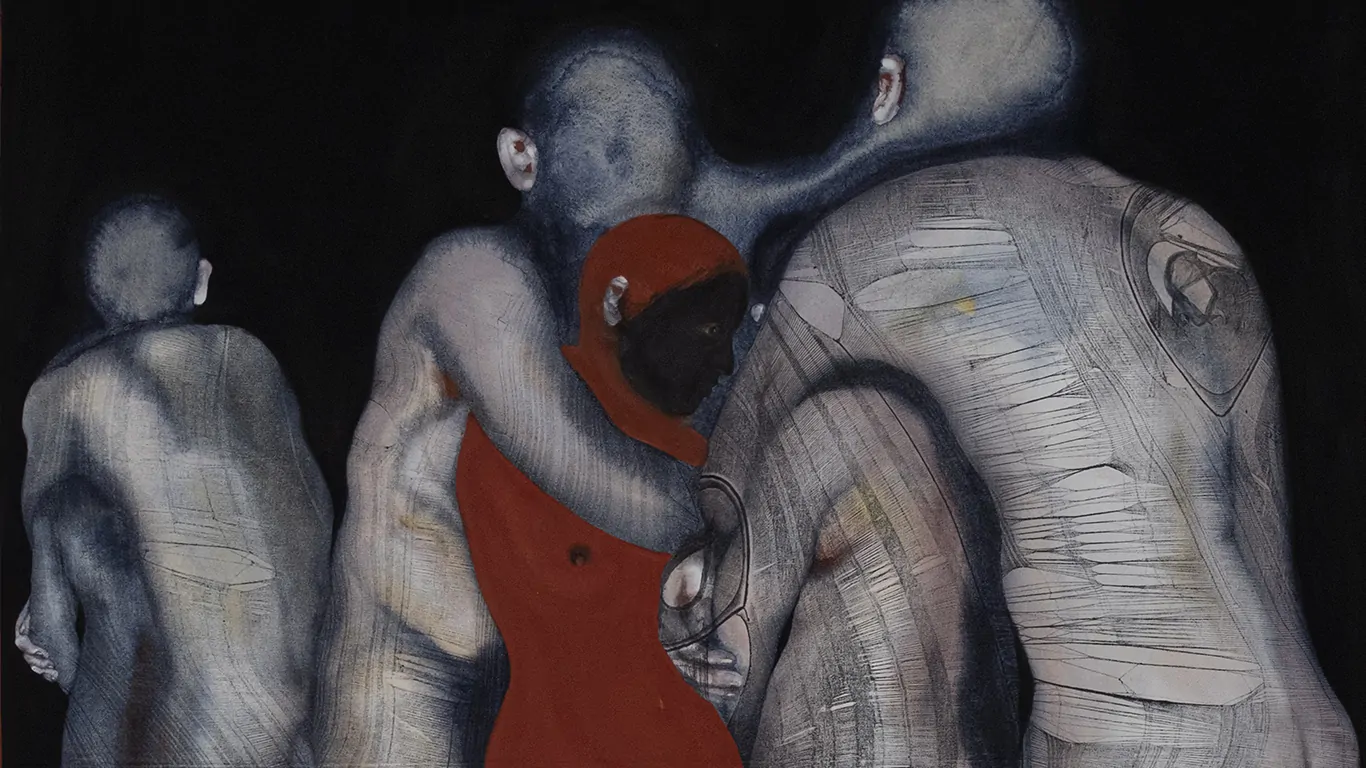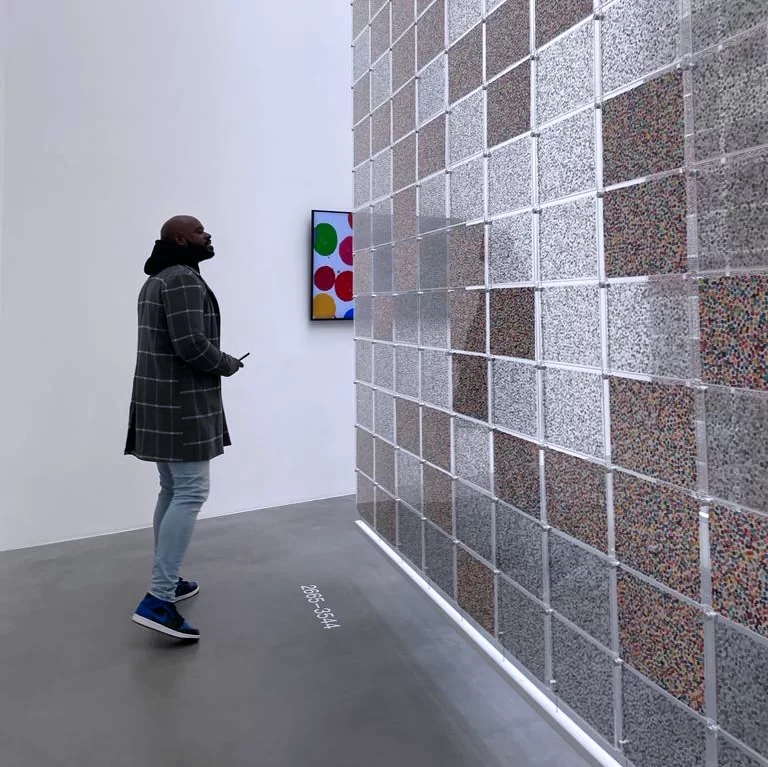For Zhang Mingxuan, the body is never just flesh but a vessel of resistance—caught between silence, spectacle, and survival. Her practice confronts how power disciplines the body, refusing both its erasure into silence and its distortion into simulation
In Discipline and Punish (1975) and The History of Sexuality (1976), Michel Foucault imagines the body as a battleground, governed by power and discipline. Power, he argues, does not merely silence desire—it produces the very knowledge of sexuality that binds us. The body thus becomes a site of regulation and confession, mediated through medicine, psychology, and family doctrine.
Zhang Mingxuan’s practice enters this dialogue, treating the body not as object but as vessel of lived experience. Her strategies of erasure echo Derrida’s notion of absence as a mode of meaning-making, while her dual cultural perspective allows her to interrogate both the Confucian body, rooted in relational duty, and the Cartesian body, reduced to mechanistic matter.
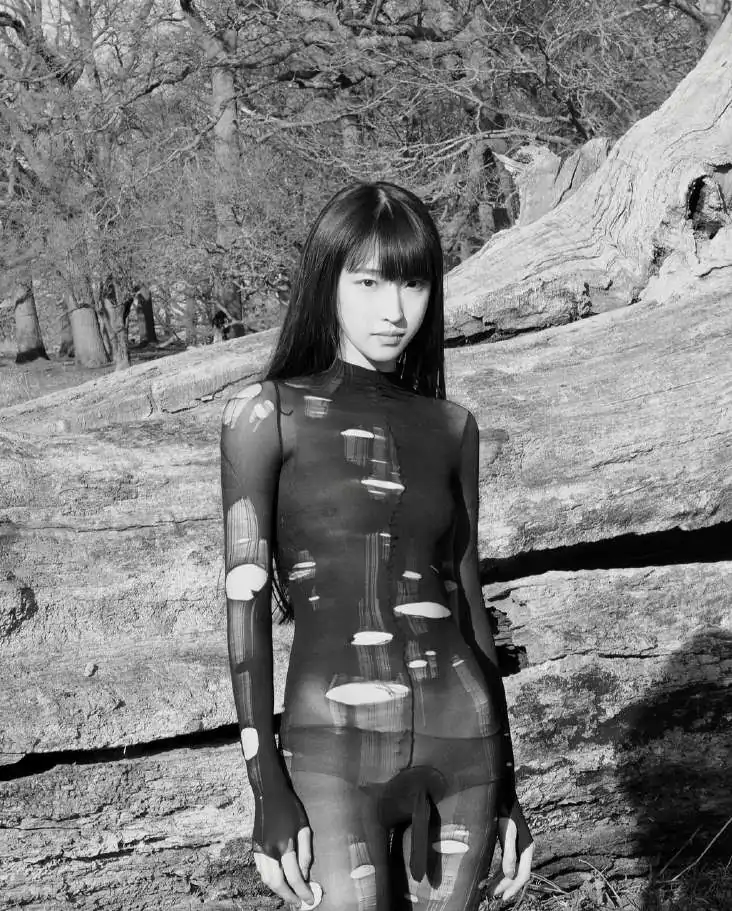
Courtesy of the artist
© Zhang Mingxuan
She approaches the body less as a fixed symbol than as shifting terrain, explored through the interwoven mediums of performance and painting. Each informs the other, as she conceives of the body—and, by extension, the canvas—at once frame and vessel, shaped by the external forces that press upon it.
At first, Mingxuan’s work feels like a whisper—delicate, elusive. Yet linger, and the silence turns insurgent. The body—its meaning, its space, its intimacy—emerges fractured, distorted, marked by absence.

Image courtesy of the artist
In her 2023 performance Plight, the artist quite literally became the art, using her own body as both medium and message. Ensnared in a black suit spun from silk stockings— a fragile second skin—she crawled through the woods and stones of London’s Richmond Park for 120 minutes. The body appeared bound, straining against its confinement, until the fabric tore and frayed. In that rupture, she revealed both the violence and vulnerability of breaking free. Zhang later carried the remnants back to her studio, transforming them into paintings that extended the performance, turning personal struggle into meditation on resistance and release.
This performance—and the sacrifice it demanded—became the catalyst for her subsequent painting series, fuelling a practice that continues to explore vulnerability, resilience, and the radical potential of the body.
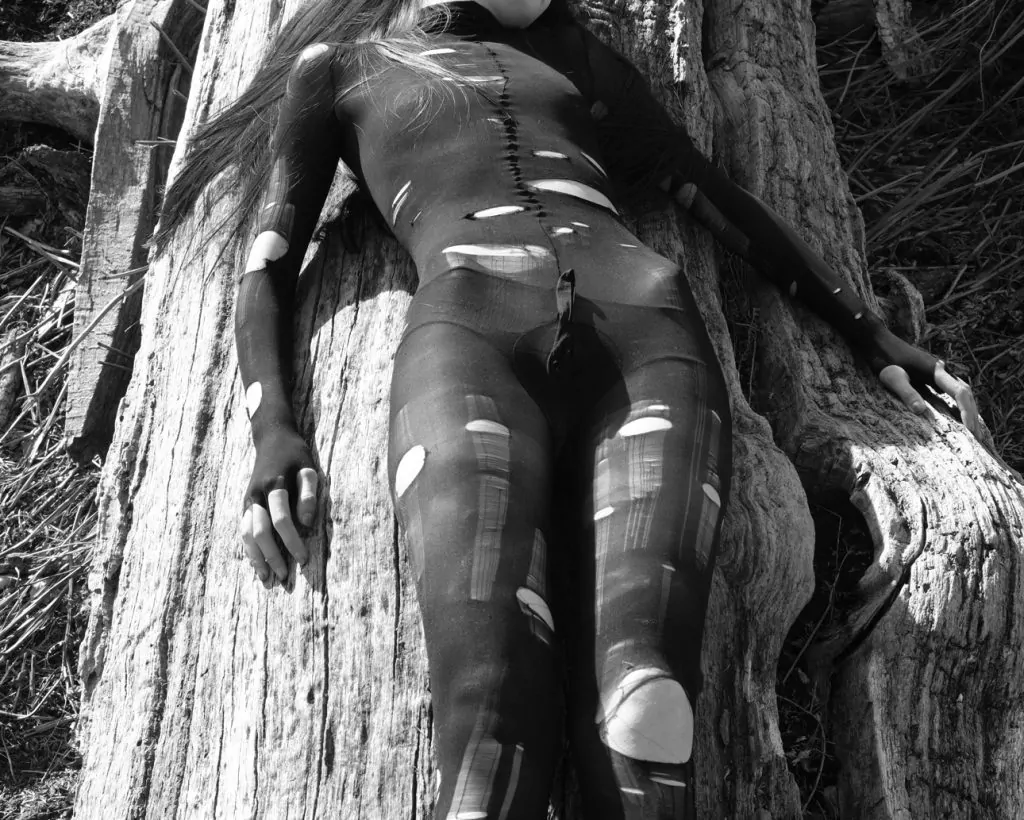
Image courtesy of the artist
Mirror within Mirror (2025) is a haunting composition, speaking less in literal terms than in psychic weight and atmosphere. Mingxuan stages bodies that hover between the tactile and the spectral. At first glance, five human forms—monumental, ghostly bodies rendered in grey and white—stand clothed in the same bodysuit she wore in performance, their surfaces scraped, scarred, etched with marks, almost identical to those she might have gathered during her crawl across Richmond Park.
These figures hover between flesh and apparition, as if their skin is both present and eroded. At the centre stands a stark intrusion: a single figure painted entirely in red, solid and opaque against the paleness of the others. The red figure appears vulnerable yet defiant, clutched by the pallid bodies pressing in around it. Mingxuan’s painterly skill is undeniable: the black background is crucial. It is not merely a void but the stage upon which these bodies emerge, suspended, luminous, yet condemned.
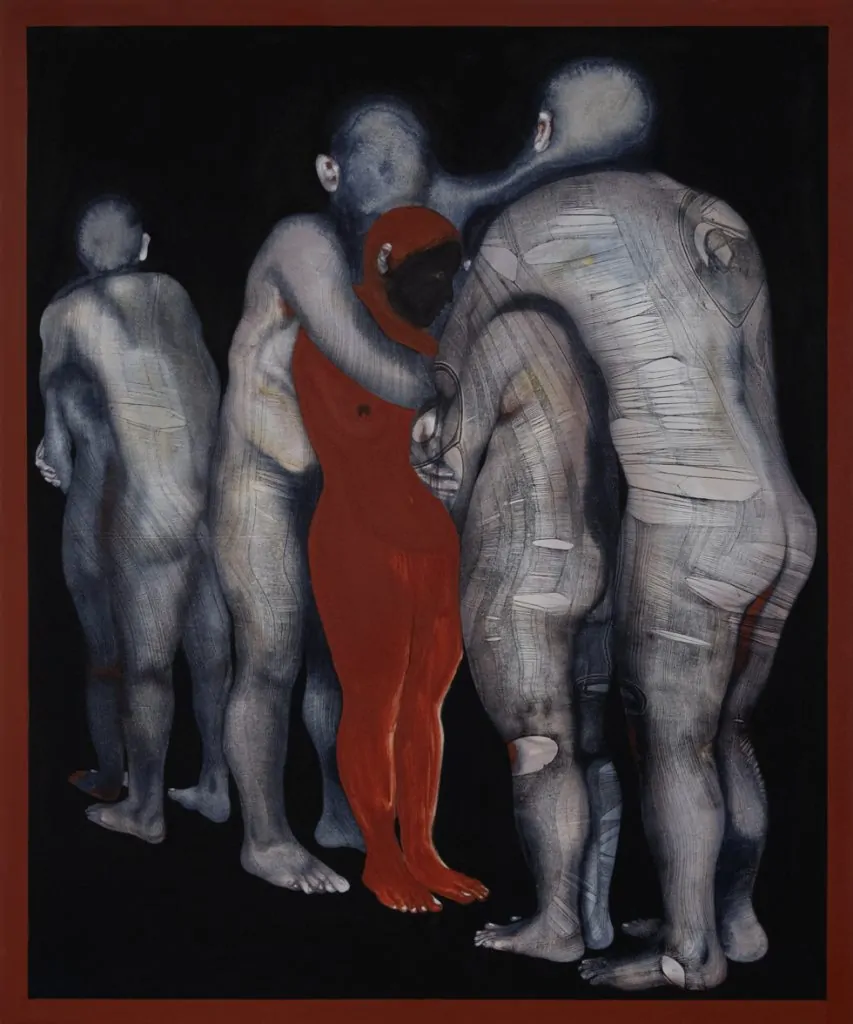
Acrylic and oil on canvas,
180cm x150cm
Image courtesy of the artist
Like the rest of her series, this work lives on that line where the body is both affirmed and undone, staging a collective drama: the many pressing in on the one, where tenderness curdles into menace, and where the most vulnerable presence is, paradoxically, the most indelible. Themes of marginalisation and survival run throughout Mingxuan’s paintings. The red figure stands as a symbol for the body marked as “other” in society — racially, culturally, or psychologically — caught between the necessity of visibility and the danger it entails. The scarred, ghostlike masses embody the weight of history, institutions, and communities that demand assimilation while simultaneously stripping away individuality.
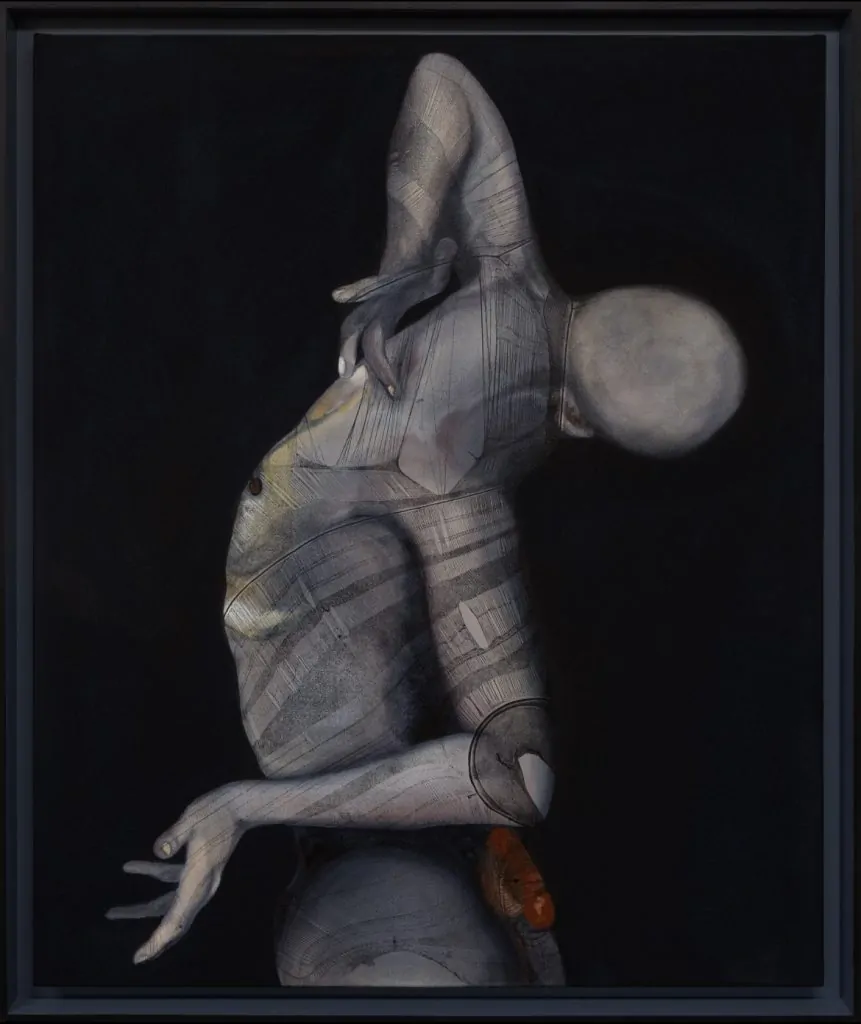
Image courtesy of the artist
In the West, the body has often been treated as a problem to be solved. From Descartes onward, it was separated from the mind and cast as machinery — measured, corrected, and disciplined by medicine, schools, prisons, and the workplace. Control comes from the outside, through rules, surveillance, and the constant demand for productivity.
In the East, the body has been defined less by autonomy than by obligation. Confucian thought ties it to family and hierarchy: the body is not fully one’s own but a trust carried for parents and society. Daoist and Buddhist traditions complicate this picture, imagining the body as fluid, porous, and impermanent, yet still bound to a larger whole. Here, power is quieter, working from within — through duty, conformity, and the pursuit of harmony.
Taken together, these traditions reveal two faces of control. The West disciplines the body through institutions; the East binds it through relationships. And today, as technology tracks our steps, sleep, and heartbeats, the two models converge: the body becomes both watched and indebted. What we imagine as most personal turns out to be the most governed.
If Confucian and Cartesian traditions anchor the body in history, Baudrillard suggests that, in the digital age, the body slips into simulation. In Simulacra and Simulation, he argues that signs and images detach from their origins, circulating freely as copies without originals.
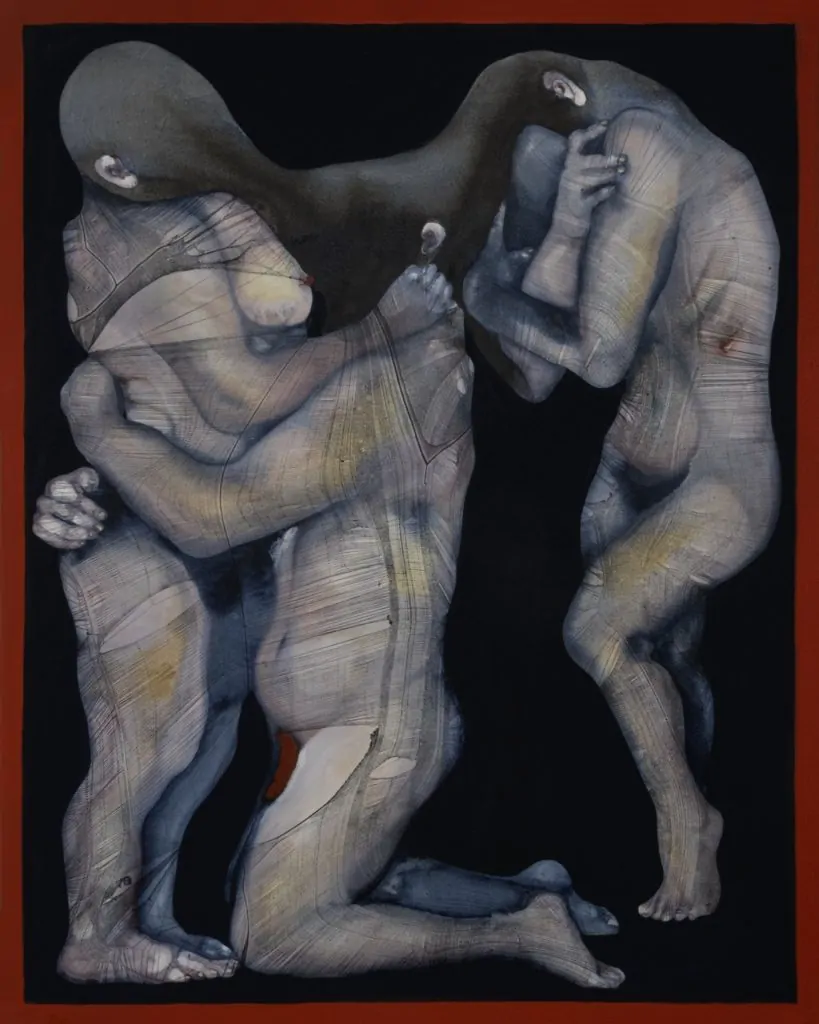
150cm x120cm
Image courtesy of the artist
Applied to the body, this means we no longer encounter it as lived, flesh-and-blood reality. Instead, the body is packaged, curated, and displayed as image — polished, idealised, even godlike. What circulates is not the body itself but its simulation: the perfected double that eclipses the messy, vulnerable reality.
It is within this convergence of traditions, technologies, and shifting ideals that Mingxuan’s practice finds its force. Rigorous yet fragile, her work offers the body as both vessel and medium, resisting the spectacle of market-driven virtue-signalling while insisting on authenticity, vulnerability, and resilience.
Through performance and painting, she stages the body’s fraught negotiations with power — ensuring it does not vanish into silence or dissolve into simulation, but remains luminous, fractured, and defiantly alive.
©2025 Zhang Mingxuan


